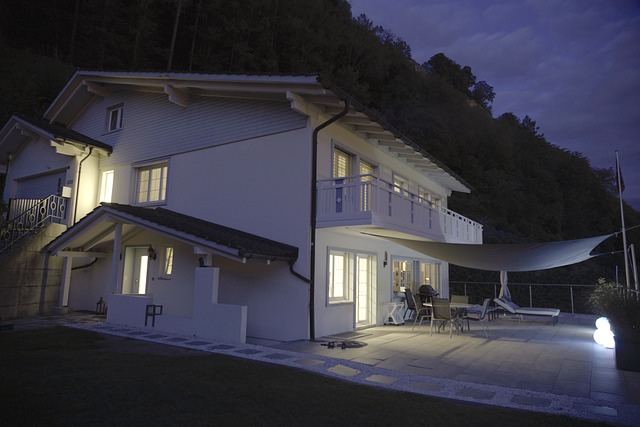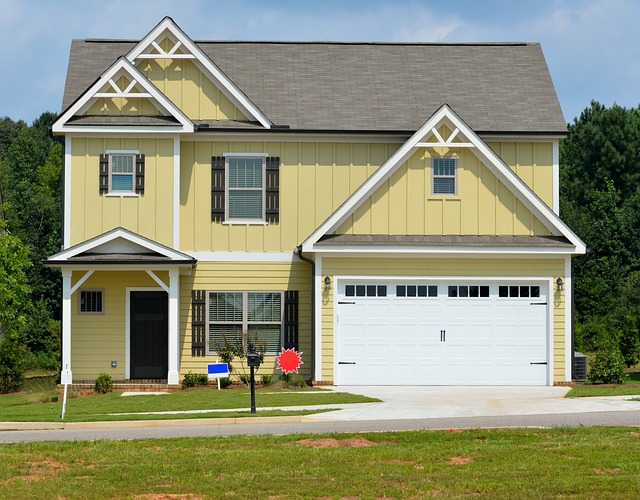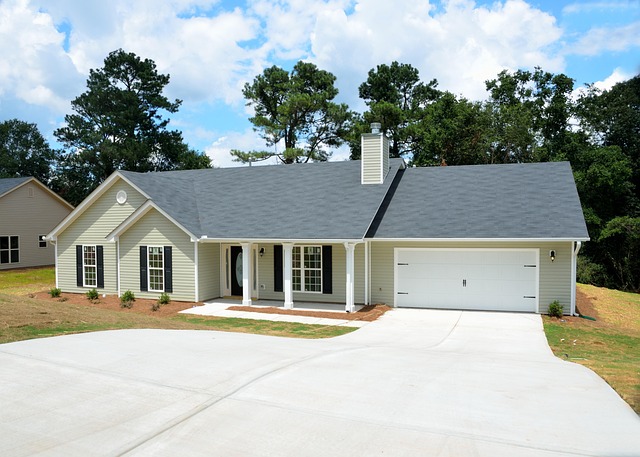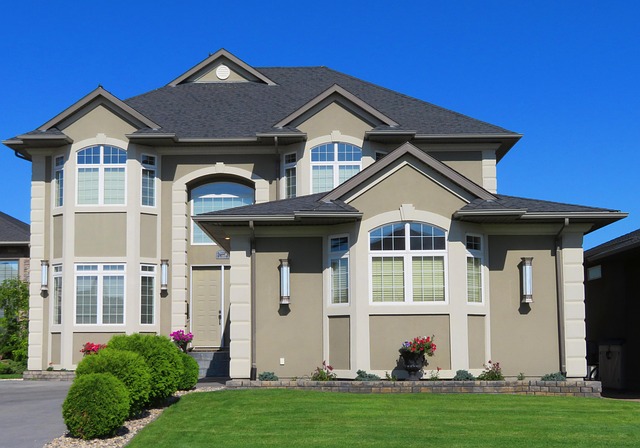An Executive Condo in Hougang offers an attractive housing option for first-time buyers with its affordable prices, spacious interiors, and vibrant neighborhood amenities. Located in new developments, these condos provide modern living with easy access to scho…….
Category: Executive Condo Hougang
Introduction
In the dynamic realm of real estate, the concept of an executive condominium (EC) in Hougang, Singapore, represents a unique blend of affordability and convenience for middle-income families and executives alike. This article delves into the intricacies of “executive-condo-hougang”, exploring its significance, the economic landscape it inhabits, and its role in shaping urban living. Readers will gain a comprehensive understanding of this housing phenomenon, its global impact, technological advancements, regulatory frameworks, and future prospects.
Understanding Executive Condominium – Hougang
An executive condominium in Hougang is a form of public housing in Singapore specifically designed for the sandwiched class—professionals who earn too much to qualify for public housing but not enough to comfortably enter the private property market. These units are a hybrid between HDB flats and private condos, offering larger living spaces with condominium facilities at subsidized rates.
The core components of an EC include:
- A mix of 2-, 3-, and 4-bedroom units
- Comprehensive facilities such as swimming pools, gyms, and playgrounds
- Proximity to essential amenities like schools, shops, and MRT stations
Historically, ECs were introduced in the 1990s to provide an additional housing option for Singaporeans. Over the years, they have evolved to meet changing demographics and economic landscapes. Today, they are a crucial part of Singapore’s housing policy, offering a stepping stone for upgrading from HDB flats to private property.
Global Impact and Trends
The model of executive condominiums in Hougang has resonated globally, influencing urban development and housing policies in various countries. In regions with similar income disparities and urban densities, ECs have been adapted to local contexts, offering a sustainable solution for middle-income earners.
Key trends shaping the trajectory of executive condominiums include:
- The growing preference for mixed-use developments that integrate residential, commercial, and recreational facilities.
- The increasing importance of sustainability in urban planning, with ECs incorporating green technologies and designs.
- The shift towards smart living, with technology playing a pivotal role in enhancing residents’ quality of life.
The global impact is evident as cities around the world grapple with housing affordability and urban sprawl, seeking inspiration from Singapore’s EC model.
Economic Considerations
Executive condominiums contribute significantly to the economy by addressing housing shortages, particularly for the middle-income group. They stimulate construction and real estate sectors, creating jobs and driving economic growth.
Market dynamics for ECs in Hougang are influenced by:
- The supply of new units, which is guided by government land sales and development plans.
- Demand from first-time homebuyers and upgraders, impacted by economic conditions and interest rates.
- The resale market, which reflects the liquidity and investment potential of ECs.
Investment patterns indicate that ECs are not only homes but also viable investment opportunities, with potential for capital appreciation over time.
Technological Advancements
Technology has played a pivotal role in enhancing the living experience in executive condominiums. Smart home technologies have become increasingly common, offering residents convenience and energy efficiency. Innovations such as solar panels, energy-efficient appliances, and building management systems are integrated into EC designs to promote sustainability.
Future potential for technological advancements includes:
- The integration of AI and IoT devices for personalized services and home security.
- Enhanced connectivity with faster internet and more robust networks to support remote work and entertainment.
- Advanced energy solutions to achieve carbon neutrality in line with global sustainability goals.
Policy and Regulation
The policies and regulations governing executive condominiums are intricate, aimed at ensuring a balanced and equitable housing market. These include:
- Eligibility criteria for buyers based on income ceilings and existing property ownership.
- Minimum occupation periods before units can be sold on the open market.
- Price control measures to prevent excessive speculation and ensure affordability.
These regulations have a profound influence on the development, pricing, and resale of ECs, shaping their role in the housing market and the lives of residents.
Challenges and Criticisms
Despite its success, the executive condominium model faces challenges such as:
- Ensuring long-term affordability amidst rising costs and changing income levels.
- Balancing supply with demand to prevent overbuilding or underprovision.
- Addressing concerns over resale value and the transition of ECs from public to private housing.
To overcome these issues, strategies such as dynamic pricing models, enhanced property management, and targeted social support could be implemented.
Case Studies
Several executive condominium projects in Hougang have set benchmarks for success. Case studies include:
- Rivervale Crest, which was well-received for its strategic location and high-quality finishes.
- Parc Central Executive, known for its integrated living concept with a shopping mall below.
- The Brownstone EC, recognized for its innovative design and strong resale performance.
These case studies provide valuable insights into the factors that contribute to the success of ECs and serve as models for future developments.
Conclusion
The executive condominium model in Hougang serves as a global example of how public housing can be elevated to meet the needs of middle-income earners. It addresses critical issues such as affordability, sustainability, and quality of life while fostering economic growth and social cohesion. The integration of technology, thoughtful policy-making, and responsive planning have made Hougang’s ECs a resounding success, offering a blueprint for other cities around the world.
As urban populations continue to grow and housing demands evolve, the lessons from Singapore’s executive condominiums will undoubtedly shape future living solutions globally.
Executive Condo Hougang: A Beginner’s Guide for Smart First-Time Buyers
The Executive Condo in Hougang presents an attractive housing option for first-time buyers seeking luxury and affordability. These smaller but high-end condos offer amenities like pools, gyms, and parks. With more space than HDB flats, convenient access to sch…….
Executive Condos in Hougang: Unlocking Luxury Living Potential
The real estate market in Sengkang is experiencing a boom, particularly within the executive condo segment, driven by strategic location, vibrant community, and upcoming developments. The Executive Condo Hougang leads this trend, attracting buyers with its aff…….
Executive Condo Resale Eligibility in Hougang: A Comprehensive Guide
Understanding and adhering to strict eligibility requirements is essential for reselling an Executive Condo (EC) in Hougang, Singapore. These regulations, enforced by the Housing & Development Board (HDB), include a 5-year minimum ownership and occupancy p…….
Selling Your Executive Condo in Hougang: A Comprehensive Guide
In Hougang, selling an Executive Condo (EC) involves a structured, transparent process. First-time buyers can purchase from original owners who meet specific criteria. Resale approval from the Housing & Development Board ensures fair market value. To sell,…….
Executive Condo Hougang: Navigating Resale Market Dynamics and Process
The Executive Condo Hougang market is a dynamic, niche segment in Singapore's real estate, appealing to professionals seeking luxurious living at affordable price points. Demand grows due to Hougang's strategic location, modern urban landscape, and p…….
Discover Luxury Living: Benefits of Executive Condos in Hougang
Executive Condos in Hougang offer modern, spacious living with luxurious features and convenient access to cafes, parks, and recreational facilities. Located in a culturally rich neighborhood, these condos provide on-site amenities like swimming pools, gyms, a…….
Unveiling Luxurious Wellness and Smart Living at Executive Condo Hougang
The Executive Condo Hougang offers a modern, luxurious living experience with innovative amenities tailored for digital residents. Boasting contemporary design, high-end finishes, and advanced smart home technology, it provides a blend of comfort, excitement,…….
Executive Condo Hougang: 5-Year Market Analysis and Future Projections
In the past five years, Hougang's executive condo (EC) market has remained dynamic and vibrant, attracting young professionals and families with its affordable yet convenient housing. Key factors driving popularity include proximity to business districts,…….
Executive Condo Hougang: Spacious Living, Vibrant Community
Sengkang and Hougang, vibrant neighborhoods in Singapore, offer attractive living options through their Executive Condos. Sengkang boasts natural beauty, modern amenities, and excellent connectivity, appealing to diverse lifestyles with its rich social fabric……..









